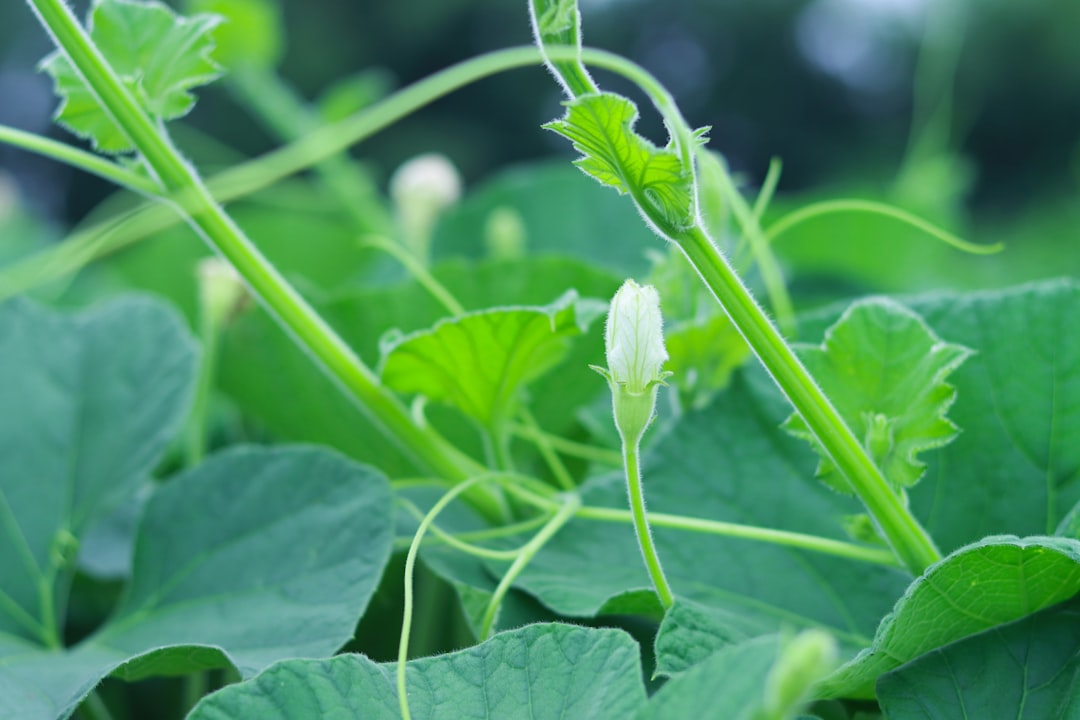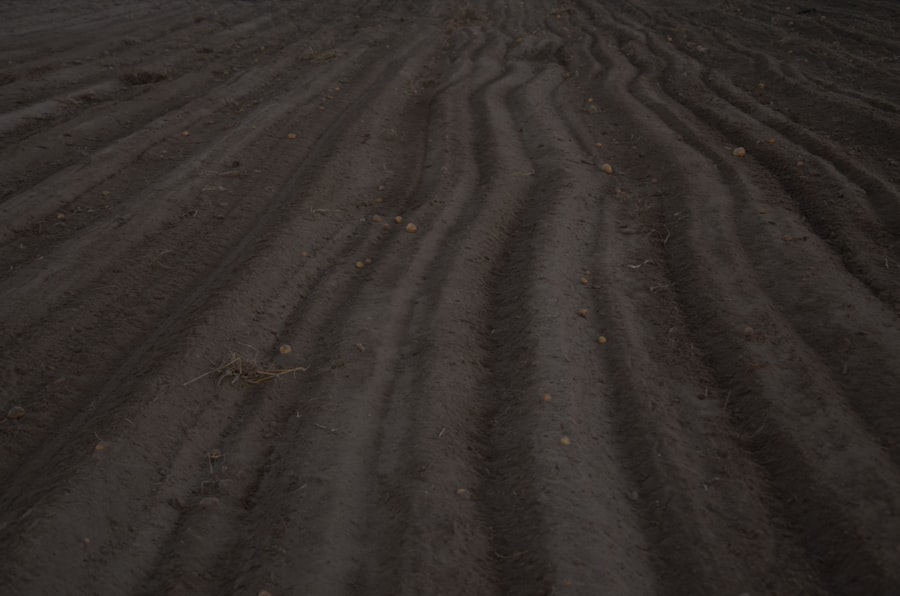Growing Potatoes from Store-Bought: Possible?

Growing potatoes from store-bought is a concept that has gained popularity among gardening enthusiasts. It is a simple and cost-effective way to grow your own potatoes at home, without the need for a large garden or specialized equipment. The process involves selecting the right potatoes, preparing them for planting, choosing the right container, preparing the soil, planting the potatoes, and providing proper care and maintenance. In this article, we will explore each step in detail and provide tips and recommendations for successful potato growth.
Key Takeaways
- Yes, you can grow potatoes from store-bought!
- Choose potatoes with healthy eyes and no signs of rot or disease.
- Cut the potatoes into pieces with at least one eye each and let them dry for a few days.
- Use a container with drainage holes and add a layer of soil and fertilizer before planting.
- Water regularly and watch out for pests and diseases. Harvest when the plants die back and the potatoes are mature.
Selecting the Right Potatoes for Planting
Not all potatoes are suitable for planting. When selecting potatoes for planting, it is important to choose varieties that are known for their ability to produce a good crop. Look for potatoes that have a firm texture and smooth skin. Avoid potatoes that are soft or have sprouts that are too long or shriveled.
It is also important to choose potatoes that are certified disease-free. Potatoes can be susceptible to various diseases such as blight and scab, which can affect the quality and yield of the crop. Look for certified seed potatoes that have been inspected and tested for diseases.
Preparing the Potatoes for Planting
Before planting, it is important to prepare the potatoes to ensure successful growth. Start by allowing the potatoes to sprout. This can be done by placing the potatoes in a cool, dark place for a few weeks. The sprouts that develop will eventually become the potato plants.
It is also important to cut larger potatoes into smaller pieces before planting. Each piece should have at least one sprout or “eye”. Cutting the potatoes into smaller pieces allows for more plants to be grown from a single potato.
Choosing the Right Container for Growing Potatoes
| Container Type | Pros | Cons |
|---|---|---|
| Grow Bags | Easy to move, good drainage, affordable | May dry out quickly, may need to be replaced after a few seasons |
| Plastic Containers | Durable, retain moisture well, come in various sizes | May not have good drainage, may become too hot in direct sunlight |
| Wooden Boxes | Attractive, good drainage, can be customized to fit space | May rot over time, may need to be lined with plastic to retain moisture |
| Tires | Free, retain heat well, can stack for vertical growing | May leach chemicals into soil, may not be aesthetically pleasing |
When growing potatoes from store-bought, it is important to choose the right container. There are several types of containers that are suitable for growing potatoes, including pots, grow bags, and even old tires. The container should be deep enough to accommodate the growth of the potato plants and allow for proper drainage.
When choosing a container, consider factors such as size, material, and portability. A larger container will allow for more potatoes to be grown, while a smaller container may be more suitable for limited space. The material of the container should be durable and able to withstand outdoor conditions. Additionally, consider the portability of the container, especially if you plan on moving it around to take advantage of sunlight or protect the plants from extreme weather conditions.
Soil Preparation and Fertilization for Potato Growth
Proper soil preparation and fertilization are crucial for successful potato growth. Potatoes prefer loose, well-draining soil that is rich in organic matter. Before planting, prepare the soil by removing any weeds or debris and loosening it with a garden fork or tiller.
To improve the fertility of the soil, add organic matter such as compost or well-rotted manure. This will provide essential nutrients for the potatoes and improve the soil structure. Additionally, consider adding a balanced fertilizer that is high in phosphorus and potassium, which are important for root development and tuber formation.
Planting the Potatoes in the Container

Once the potatoes have sprouted and the soil has been prepared, it is time to plant them in the container. Start by filling the container with a few inches of soil. Place the sprouted potatoes on top of the soil, spacing them evenly apart. Cover the potatoes with another few inches of soil, leaving some space at the top of the container for watering.
It is important to plant the potatoes at the right depth. The sprouts should be facing upwards and covered with enough soil to protect them from sunlight. If planted too deep, the sprouts may struggle to reach the surface, while if planted too shallow, the potatoes may be exposed to sunlight and turn green.
Watering and Care for Growing Potatoes
Proper watering and care are essential for the growth and development of potatoes. Water the potatoes regularly, keeping the soil evenly moist but not waterlogged. Avoid overwatering, as this can lead to rotting of the tubers.
In addition to watering, it is important to provide proper care for the potato plants. This includes regular weeding to remove any competing plants or weeds that may hinder the growth of the potatoes. It is also important to monitor for pests and diseases and take appropriate action if necessary.
When and How to Harvest Potatoes from Store-Bought
Knowing when and how to harvest potatoes is crucial for obtaining a good crop. Potatoes are typically ready for harvest when the plants have died back and the foliage has turned yellow or brown. This usually occurs around 10-12 weeks after planting.
To harvest the potatoes, gently dig around the base of the plant with a garden fork or shovel. Carefully lift the plant out of the container, being careful not to damage the tubers. Shake off any excess soil and allow the potatoes to dry in a cool, dark place for a few days before storing.
Common Problems and Solutions in Growing Potatoes from Store-Bought
While growing potatoes from store-bought can be a rewarding experience, there are some common problems that may arise. One common problem is potato blight, a fungal disease that can cause rotting of the tubers. To prevent blight, avoid planting potatoes in areas where blight has been present in previous years and practice good sanitation by removing any infected plants.
Another common problem is potato scab, a bacterial disease that causes rough, scaly patches on the surface of the tubers. To prevent scab, avoid planting potatoes in alkaline soil and ensure proper soil moisture levels.
The Pros and Cons of Growing Potatoes from Store-Bought
In conclusion, growing potatoes from store-bought can be a rewarding and cost-effective way to grow your own potatoes at home. It allows you to have control over the quality and variety of potatoes you grow, and it can be done even with limited space.
However, there are some disadvantages to consider. Growing potatoes from store-bought may not always yield the same results as using certified seed potatoes. Store-bought potatoes may be treated with chemicals to prevent sprouting, which can affect their ability to grow. Additionally, there is a risk of introducing diseases or pests into your garden when using store-bought potatoes.
Overall, growing potatoes from store-bought can be a fun and rewarding experience for gardeners of all levels. By following the steps outlined in this article and providing proper care and maintenance, you can enjoy a bountiful harvest of homegrown potatoes.
If you’re interested in learning more about growing potatoes from store-bought ones, you might find this article on Lawn World’s website helpful. They provide a comprehensive guide on how to successfully grow potatoes at home, including tips on selecting the right potatoes, preparing the soil, and caring for your plants throughout the growing season. Check out their article here to get started on your potato-growing journey. And if you want to explore more gardening topics, don’t forget to visit Lawn World’s sitemap for a complete list of their informative articles.
FAQs
Can I grow potatoes from store bought potatoes?
Yes, it is possible to grow potatoes from store bought potatoes.
What type of potatoes should I use?
You can use any type of potato, but it is recommended to use organic potatoes as they are less likely to have been treated with chemicals that can inhibit growth.
What is the process for growing potatoes from store bought potatoes?
The process involves cutting the potato into pieces, each with at least one “eye” or sprout, and planting them in soil. The potatoes should be planted in a sunny location and watered regularly.
When is the best time to plant potatoes?
Potatoes should be planted in the spring, after the last frost, and harvested in the fall.
How long does it take for potatoes to grow?
Potatoes typically take 90-120 days to grow, depending on the variety and growing conditions.
Can I grow potatoes in a container?
Yes, potatoes can be grown in containers such as buckets or large pots. Make sure the container has drainage holes and is filled with well-draining soil.
What are some common problems when growing potatoes?
Common problems include pests such as potato beetles and diseases such as blight. It is important to rotate crops and practice good soil management to prevent these issues.



